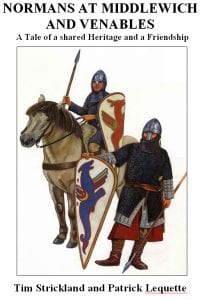NORMANS AT MIDDLEWICH and VENABLES
The Age of the Normans, the years in which the Middlewich we know today re-emerged as a place of some size and importance. We have thus been delving into, understanding and celebrating these things in so many ways: with Norman festivals and exhibitions, with the creation of the Norman Middlewich tapestry, with the training of stalwart members of the community as specialist guides, and with the active participation of the local schools. In so doing, we have discovered much to interest, to involve young and old and not-so-old, to develop knowledge of an important ingredient to the town’s heritage, and to forge new friendships.

Middlewich Town Council’s active involvement in the local heritage began with the discovery of our Roman Fort at Harbutt’s Field in 1993. Out of this single event emerged the Middlewich Heritage Project, which has done so much to put the town ‘on the map’. Work on the Romans continues but, from the outset, we always assumed that we would include key aspects of our Post-Roman heritage. This has taken us to the Norman Period: the subject of this book. The original plan was for Patrick Lequette and Tim Strickland jointly to produce a lavishly illustrated book -in French and English- about Middlewich and Venables: along similar lines to our book on the Romans, which we published in 2001. In the event, however, we were not able to secure the necessary grant from the Heritage Lottery Fund on this occasion, and have had to ‘lower our sights’ to a shorter, less lavish, and simpler book, and one that could only be in an English edition. Nonetheless, despite a simplification in the design and layout you not will notice any reduction in the quality of content.
The book can be ordered from us via the bookshop in this website.
The legacy of the Venables in Middlewich can be explored further by visiting the Venables Project.
The Venables Screens Project within St Michael and All Angels Grade II*
The Venables Screen is unique in Cheshire, and, whilst it cannot be said with complete certainty, most likely the country, and was described by Raymond Richards in his monumental work ‘Old Cheshire Churches’, as the ‘piece de resistance’. This significance has been further heightened by the discovery during the course of researching this Plan that heraldic representations are also painted on the rear of the screen, indicating that it was originally designed to be viewed from both sides, a fact not previously known. The Venables were a family of Norman decent whose title was created by Hugh Lupus, the first Norman Earl of Chester, in the late C11th. Kinderton was the smallest of eight Cheshire baronies, but survived the longest, with members of the same family using the title for six hundred years: the family’s progenitor, Gilbert, appears in the Domesday Survey and was the likely recipient of the original Barony, the last of the line being Peter Venables who died on l9 January 1679. Peter’s only child was a daughter whose family were elevated to the peerage when George Venables-Vernon inherited the title in 1762. The unique nature of the Venables Screen, taken in the context of the church building and specifically referred to in its Listing description, implies that the screen should also be considered as having an Exceptional overall significance value, and is clearly worthy of better display.
